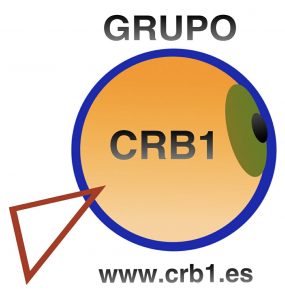*Find English version below
EDITAS MEDICINE anuncia resultados positivos en el ensayo clínico BRILLANCE Fase I/II , para la Amaurosis Congénita de Leber 10 , causada por el Gen CEP-290
EDITAS MEDICINE anuncia resultados positivos en el ensayo clínico BRILLANCE Fase I/II , para la Amaurosis Congénita de Leber 10, causada por el Gen CEP-290 y realizado con la técnica CRISPR.
No se detectaron efectos secundarios de importancia y se observ? una evoluci?n favorable en los pacientes tratados.
Es la segunda noticia que tenemos en los dos últimos meses sobre la técnica CRISPR, para tratar a pacientes con enfermedades Genéticas, la primera noticia la tuvimos en Julio cuando se publicó la noticia de que habían tratado a un grupo de pacientes en UK, de una enfermedad grave con esta técnica, se trata de la Amilaidosis por Transfiretrina, logrando unos resultados muy positivos.
Queremos recordar que uno de los principales descubridores de esta técnica fue el científico español Francisco Mogica, siendo este científico el que le puso nombre a este descubrimiento, que es un acrónimo en inglés que significa Repeticiones Palindromicas Cortas Agrupadas y Regularmente Interespaciadas, realizando las investigaciones en la Universidad de Alicante, donde desarrolla toda su labor docente y de investigación.
Esperamos que esta técnica sirva para dar m?s eficacia y seguridad a la terapia futura de CRB1 y que en un plazo de tiempo razonable podamos disponer de una terapia, que cumpla el mayor nivel de expectativas para todos los pacientes afectados por este Gen
ENGLISH VERSION
EDITAS MEDICINE announces positive results in the BRILLANCE Phase I / II clinical trial for Leber 10 Congenital Amaurosis, caused by the CEP-290 Gene and performed with the CRISPR technique.
No significant side effects were detected and a favorable outcome in the patients was treated.
It is the second news we have in the last two months about the CRISPR technique, to treat patients with genetic diseases, the first news we had in July when the news was published that they treated a group of patients in the UK for a disease Serious with this technique, it is Transfirethrin amylaidosis, achieving very positive results.
We want to remember that one of the main discoverers of this technique was the Spanish scientist Francisco Mogica, being this scientist who gave the name to this discovery, which is an acronym in English that stands for Regularly Interspaced and Grouped Short Palindromic Repeats, conducting research in the University of Alicante, where he develops all his teaching and research work.
We hope that this technique will serve to give more efficacy and safety to future CRB1 therapy and that within a reasonable period of time we can have a therapy that meets the highest level of expectations for all patients affected by this gene.

